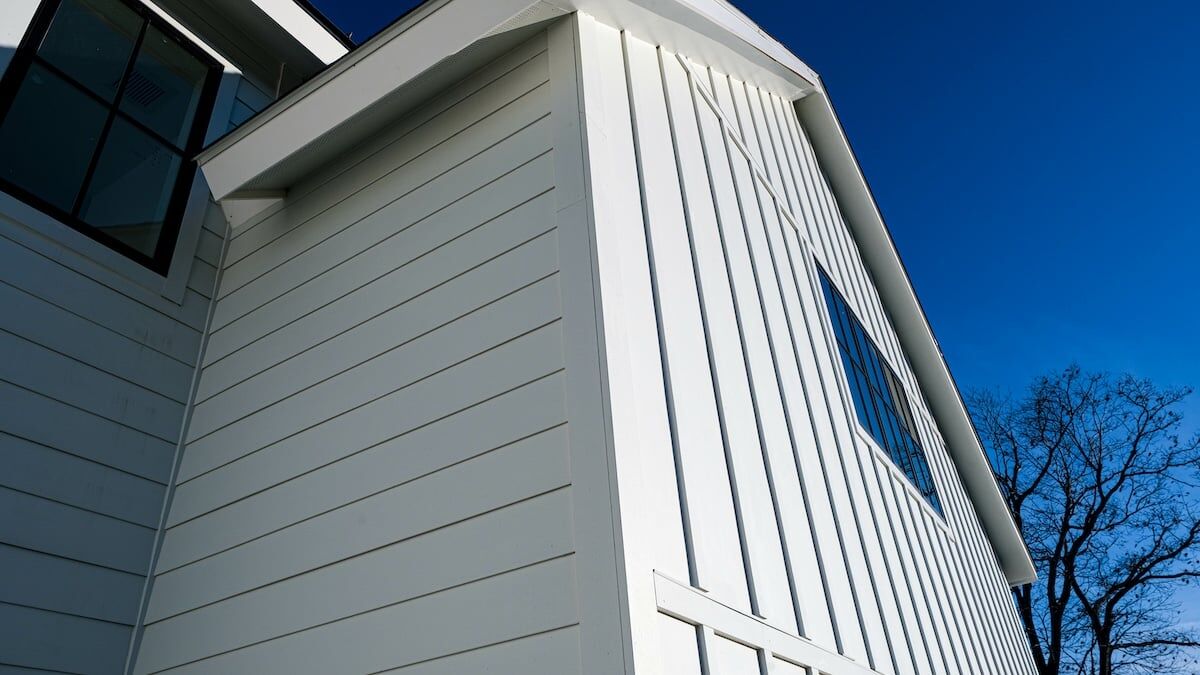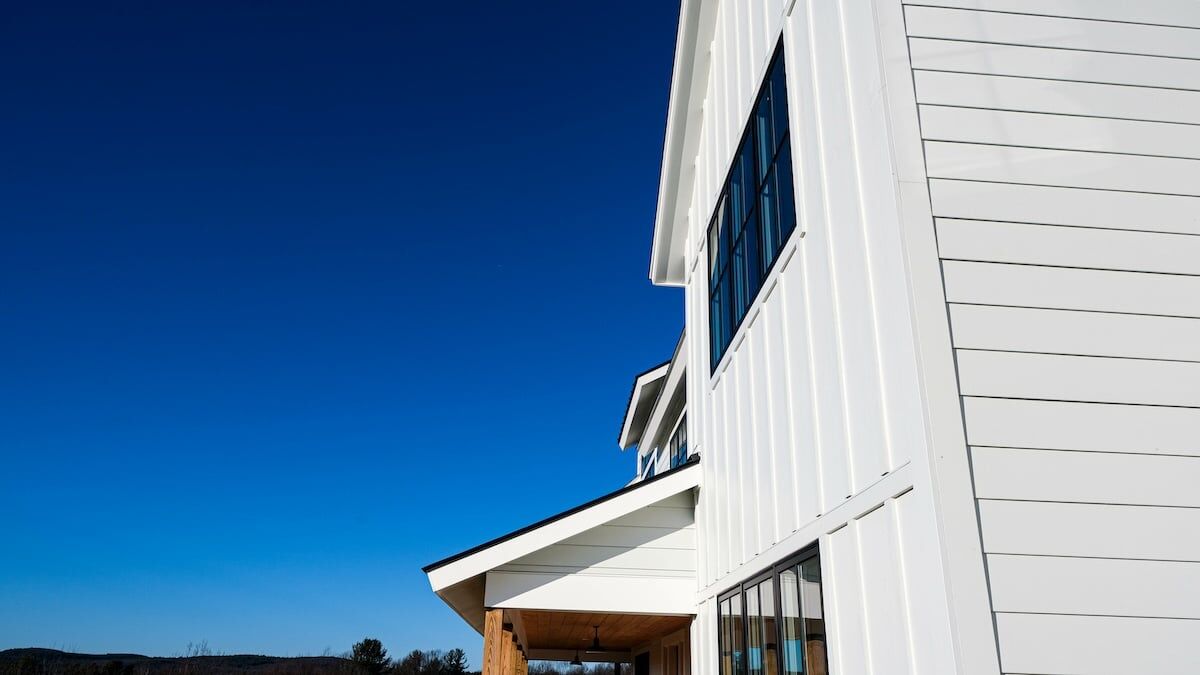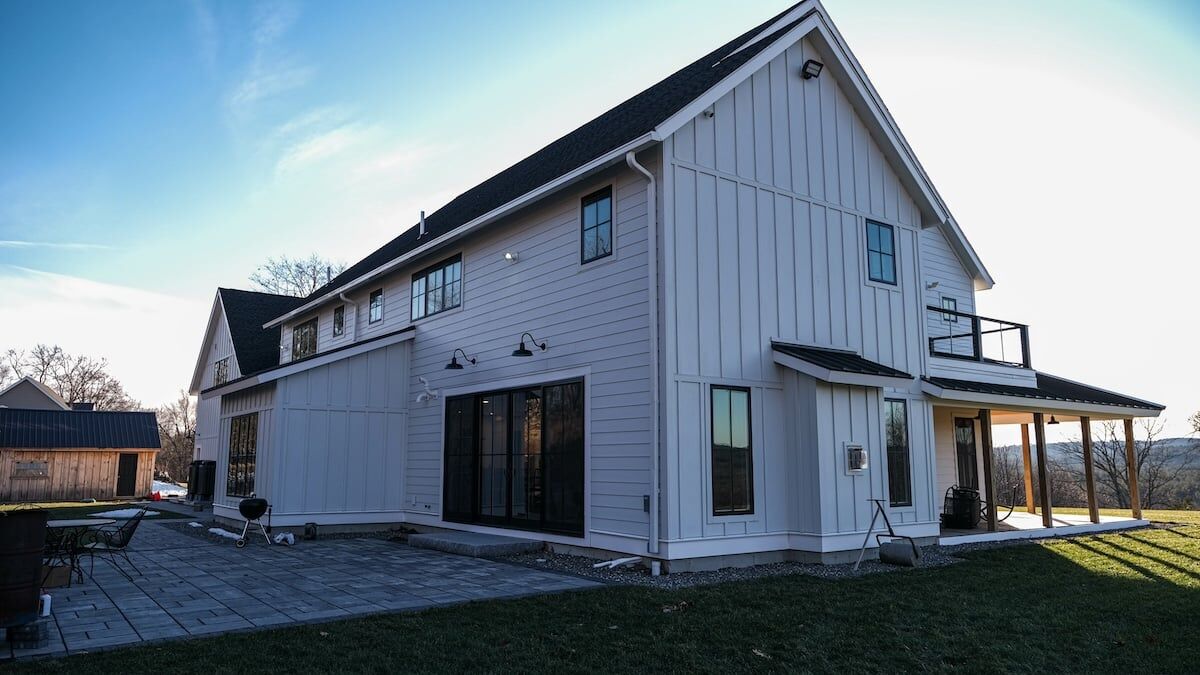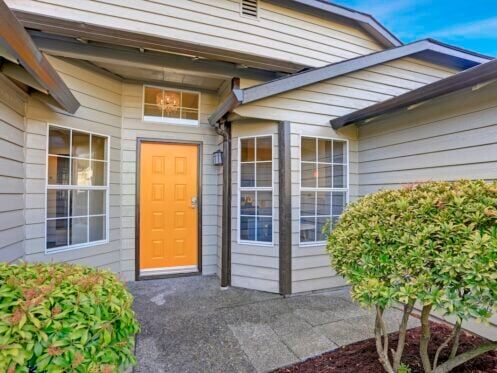When it comes to exterior cladding, comparing Hardie board vs vinyl siding is a smart step for homeowners looking to boost curb appeal and protect their home’s structure. These two materials are among the most popular siding options in the U.S., and each comes with unique advantages, maintenance needs, and costs.
- Long-term durability: Not all siding is built to handle extreme weather or impact.
- Budget considerations: Understanding cost differences can help you plan wisely.
- Aesthetic preferences: Both materials offer different textures, styles, and finishes.
This guide walks through the pros and cons of Hardie board and vinyl siding so you can make a confident, informed decision.
🤔 What Is Hardie Board Siding?
Hardie board is a type of fiber cement siding made from a blend of cement, sand, water, and cellulose fibers. It’s manufactured by James Hardie and known for its strength, fire resistance, and wood-like appearance.

Key Features
- Material makeup: Cement-based, dense, and heavy.
- Appearance: Can mimic wood grain and comes pre-primed or pre-painted.
- Reputation: Known for durability and performance in severe climates.
What Is Vinyl Siding?
Vinyl siding is made from polyvinyl chloride (PVC), a lightweight and flexible plastic. It’s often chosen for its affordability and low-maintenance qualities.
Key Features
- Material makeup: Durable plastic molded into various styles.
- Appearance: Available in a wide range of colors and textures.
- Reputation: Popular among budget-conscious homeowners seeking low-maintenance solutions.
📋 7 Major Differences Between Hardie Board and Vinyl Siding
Let’s break down the key areas where these two materials differ:
1. Durability
- Hardie board: Resistant to hail, wind, fire, and insects. Holds up exceptionally well in harsh climates.
- Vinyl siding: Can crack or become brittle over time, especially in cold weather. More prone to impact damage.
2. Maintenance
- Hardie board: Requires repainting every 10–15 years if not prefinished. Needs occasional caulking and cleaning.
- Vinyl siding: Virtually maintenance-free. No painting required. A simple rinse can keep it clean.
3. Cost
- Hardie board: Higher upfront cost for materials and labor due to weight and complexity.
- Vinyl siding: More affordable in both material and installation. Ideal for tight budgets.
4. Lifespan
- Hardie board: Can last 30–50 years or more with proper care. Often comes with long warranties.
- Vinyl siding: Typically lasts 20–30 years but may need earlier replacement depending on climate.
5. Fire Resistance
- Hardie board: Non-combustible and approved for fire-rated construction. Adds an extra layer of protection.
- Vinyl siding: Melts or burns when exposed to extreme heat or flame.
6. Appearance
- Hardie board: Offers a high-end, authentic wood look. Ideal for homes aiming for traditional or upscale curb appeal.
- Vinyl siding: Comes in many colors and styles but can look plastic-like up close.
7. Environmental Impact
- Hardie board: Heavier carbon footprint due to cement production, but it lasts longer.
- Vinyl siding: Manufactured from plastic, which is not biodegradable and harder to recycle.
✅ Pros and Cons of Hardie Board Siding
Pros
- High durability: Resists weather, fire, pests, and impact better than many other siding materials.
- Premium appearance: Mimics the look of real wood without the rot or warping.
- Excellent resale value: Boosts home value and is attractive to future buyers.
- Long lifespan: Can outlast vinyl siding by decades with the right maintenance.
Cons
- Higher installation cost: Labor-intensive and requires special tools.
- Heavier material: Adds weight to walls, which may affect structural planning.
- Maintenance needs: Will require occasional repainting and caulking.

⭐️ Pros and Cons of Vinyl Siding
Pros
- Cost-effective: One of the most affordable siding options available.
- Quick installation: Lightweight panels snap together easily.
- Low maintenance: Never needs painting or sealing.
- Variety of styles: Available in many textures, colors, and finishes.
Cons
- Less impact-resistant: Can crack or warp under pressure or extreme temperatures.
- Lower resale appeal: May not impress buyers looking for premium materials.
- Shorter lifespan: Especially in areas with harsh winters or high UV exposure.
🛠️ Installation Differences
Installing Hardie board vs vinyl siding requires different levels of experience and tools.
Hardie Board Installation
- Requires special cutting tools due to its cement composition.
- Needs skilled laborers with fiber cement experience.
- Longer installation time due to weight and fastening methods.
Vinyl Siding Installation
- Easier for general contractors or DIYers.
- Can be installed quickly with standard hand tools.
- Lighter panels reduce labor strain and speed up the process.
☀️ Climate Considerations
Your region’s weather plays a big role in which siding material performs best.
For Harsh Winters or Hail
- Hardie board: Best choice for withstanding storms, freeze-thaw cycles, and hail damage.
- Vinyl siding: More likely to crack in cold temps or become dented from hailstones.
For Hot, Humid Areas
- Hardie board: Resists humidity well and won’t warp or bubble.
- Vinyl siding: May fade over time with prolonged UV exposure unless you choose UV-resistant versions.
📋 Which Siding Is Right for You?
Choosing between Hardie board and vinyl siding depends on your budget, climate, style preferences, and long-term goals.
Choose Hardie Board If:
- You want premium durability and upscale aesthetics.
- You live in an area with frequent storms or fire risk.
- You’re willing to invest more upfront for long-term performance.
Choose Vinyl Siding If:
- You need a budget-friendly solution with fast installation.
- You prefer low maintenance and easy cleaning.
- Your region has mild weather and low storm activity.

👍 Making the Right Siding Investment for Your Home
The decision between Hardie board vs vinyl siding comes down to what matters most to you—durability, cost, appearance, or maintenance. Both options have earned their place in the home improvement world, but they cater to different needs.
At Indy Roof & Restoration, we help homeowners weigh all the factors—budget, climate, design, and longevity—before making a recommendation. Our siding experts provide honest insights and professional installation so your home looks great and performs well for years to come.
Need help choosing the right siding material for your home? Contact Indy Roof & Restoration today and discover the perfect fit for your style and needs.

